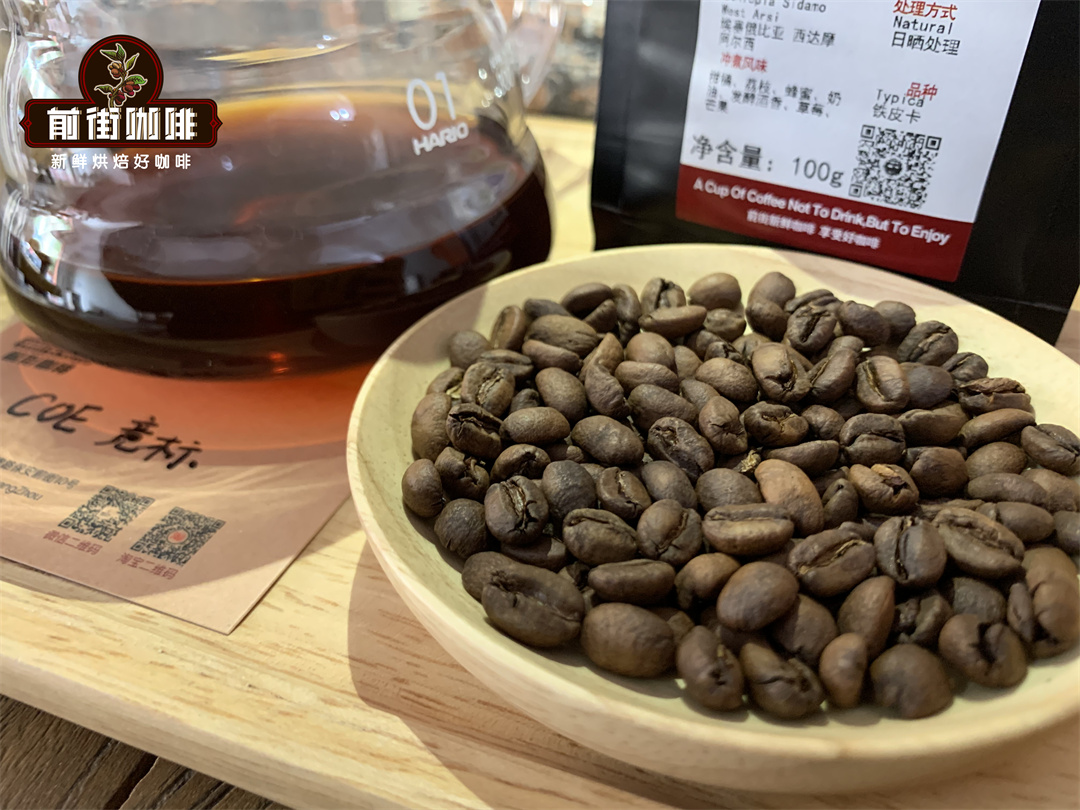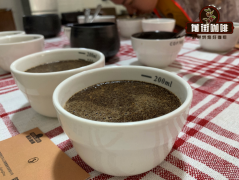Is the acid of fine coffee called caffeic acid? is there a scientific basis for the acid of coffee?
When you drink a coffee with a good acid, you may feel very ordinary, because you don't know how to describe it, this is only for people who don't know much about coffee. At the Front Street Coffee Factory, every time a cup of fresh beans is tested, the roaster will always go out of his way to explain to us the acidity of the coffee, its flavor, and what the acid tone belongs to.
In fact, when we first tried to test and drink coffee, we couldn't figure out what acids were in coffee, such as malic acid, citric acid, grape acid, cranberry, etc. It was really a tricky thing to distinguish between these coffee acidity.
I used to have the hardest time deciphering "flavor profile" and "flavor wheel." To me, it's all like coffee. Of course, some are more sour than others, some are more bitter than others, but they are still coffee. Today, the front street to talk about coffee acid.
Coffee acidity
Acid is a chemical substance characterized by an acid taste. In fact, the Latin word for "acid" literally means "acid." The pH of an aqueous solution of acid is less than 7, and the lower the pH, the higher the acidity.
Acid is a natural product found in many foods, such as lemon, vinegar, yogurt, and even coffee. Coffee alone contains hundreds of different acidic compounds, ranging from familiar ones (such as citric acid) to ones (such as 4-monocaffeoylquinic acid). Front Street will discuss only the main acids that affect taste.
citric acid
Citric acid, as the name suggests, is present in citrus fruits in high concentrations. In fact, it can make up almost 8% of the dry weight of these foods. It is undoubtedly the most common acid in all fruits and vegetables, and the easiest to identify.
malic acid
The taste of malic acid is usually associated with green apples (after all, it comes from the Latin malum, meaning "apple"). In rhubarb you will find malic acid in its purest form, which constitutes the main flavor of rhubarb.
In the culinary world, malic acid is usually associated with lime, but it is easier to think of it as "unripe fruit flavor." The concentration of this acid usually decreases as the fruit ripens, so anything green like green grapes, kiwis or currants will appear on the card.
tartaric acid
Tartrate is usually associated with grapes because of its high concentration in fruit. But that's not the only place you can find it. Its salt, potassium tartrate (commonly known as tartar), occurs naturally in brewing and is often used as a leavening agent in food preparation.
In terms of taste, the most distinctive characteristic of tartaric acid is its mouthfeel. It elicits plenty of mouthwatering flavors and leaves an astringent aftertaste. In fact, it is one of the main ingredients in "super acid" candy and gobstoppers.
Acetic acid
Acetic acid is special. In addition to a very characteristic unpleasant smell, it also has a pungent unpleasant smell. At lower concentrations, this gives it a pleasant sharpness or lime taste, but at higher concentrations it tastes and smells like fermentation.
This trendy taste and smell, especially when paired with other flavors (especially sugar), produces a taste of wine or champagne.

pH and coffee acidity
The easiest way to understand coffee acidity is to think of it as an abstract concept. "Orange acidity" doesn't mean your coffee tastes like oranges. Its true meaning is closer to "it's sour like an orange."
If you consider this explanation, suddenly tasting notes starts to make more sense. Since blueberries are less acidic than lemons, coffee with "blueberry acidity" will undoubtedly be less acidic than coffee with "citric acidity." Does that make sense?
Within the pH range, some fruits have similar pH values, although they taste completely different. Take apples and oranges for example. So how does this work?
In the case of apples and oranges, the predominant acids in the respective fruits are different. Green apples are mainly composed of malic acid, while oranges are full of citric acid.
Imagine a lovely, bright, light-roasted African coffee. At the time of brewing, it had a pH reading of 4.6, so we're working on grapes, peaches, plums, pineapples, etc. Then you'll notice that it leaves an astringent taste of tartaric acid in your mouth. You can define it as "grape acidity," or anything in the sour drupe family (e.g., sour cherries, plums, etc.). This grape acidity combined with acetic acid fermentation can even give you a wine-like acidity.
Similarly, citrus flavors at low pH values can be identified as "citric," while higher pH values may be closer to orange. More acidic apple flavors with lower pH values may be lime, while higher pH values may be categorized as rhubarb, green apple, or even grapefruit. Once you understand all this, it becomes much easier to cup and understand coffee acidity.
Improve your taste
It's always good to practice your skills by tasting various flavors. There's nothing like tasting a variety of acidic foods to enhance the taste of coffee acidity!
After clearly understanding the taste of pure acid, turn to some actual foods. Prepare a large plate of fruit, vinegar, or even wine and sort them according to the acidity they taste in it.
The thing about cupping is that once mastered, it can both help you understand coffee and make drinking coffee more fun. While acidic features may seem daunting, once you know what you're looking for, they're actually easy to distinguish. Before you know it, you will become an acid expert.
Important Notice :
前街咖啡 FrontStreet Coffee has moved to new addredd:
FrontStreet Coffee Address: 315,Donghua East Road,GuangZhou
Tel:020 38364473
- Prev

Coffee cup test detailed process introduction coffee cup test steps analysis coffee cup test preparation
Being able to understand the flavor characteristics of coffee not only looks impressive. It can also improve the enjoyment of coffee. Although it seems impossible to distinguish the flavor characteristics at first, it is actually easy to train the taste of coffee. Like anything, practice makes perfect. The more we come into contact with the different flavors and properties of coffee, the better.
- Next

Changes in the Colombia Fine Coffee Industry Exploring the Origins of Colombia Coffee
Have you ever heard of a coffee name as well-known as Juan Valdez? Juan valdez, however, isn't even real. He was a fictional character invented in the 1950s by the marketing team of Fedecaf, the national coffee association in Colombia. At one time, however, coffee was an exotic crop that colonized the land of Colombia. Centuries of adaptation, innovation and alignment
Related
- What brand of black coffee is the most authentic and delicious? what are the characteristics of the flavor of the authentic Rose Summer Black Coffee?
- Introduction to the principle and characteristics of the correct use of mocha pot A detailed course of mocha pot brewing coffee is described in five steps.
- Which is better, decaf or regular coffee? how is decaf made?
- How much is a bag of four cat coffee?
- How about four Cat Coffee or Nestle Coffee? why is it a cheap scam?
- Which is better, Yunnan four Cats Coffee or Nestle Coffee? How about cat coffee? is it a fake scam? why is it so cheap?
- How about Cat Coffee? what grade is a hoax? which instant coffee tastes better, four Cat Coffee, Nestle Coffee or G7 coffee?
- Process flow chart of coffee making-Starbucks coffee making process what coffee tastes good at Starbucks
- The top ten best coffee beans in the world Rose summer coffee or Tanzanian coffee tastes good
- Yunnan four cat coffee is good to drink?_four cat coffee is a big brand? four cat blue mountain coffee is fake?

